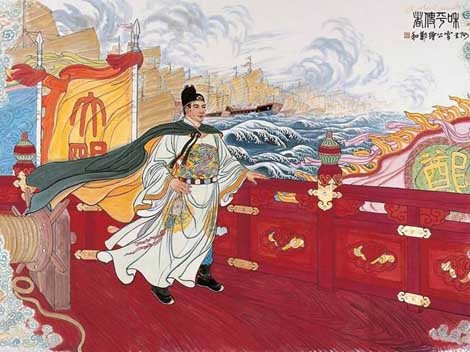total population of chinese
Chinese Muslims
total population of Muslims
Straits Settlements
Singapore
164.041
4.920 (3%),(8.8%)*
55.673
Penang & Wellesley
98.424
2.952 (3%), (2.2%)
134.110
Malacca
19.394
880 (4.5%), (1%)
77.495
Confederation of Malay States
Sultanate of Perak
149.375
4.479 (3%), (2.7%)
164.746
Sultanate of Pahang
8.695
258 (3%), (0.3%)
74.745
Sult. of Negeri Sembilan
32.901
987 (3%), (1.6%)
60.749
Sultanate of Selangor
108.768
3.251 (3%), (6.2%)
52.478
British North Borneo Sabah 200 (0.48%) 41.220Sarawak & Labuan a few
The figures in parenthesis are the ratio of Chinese Muslims to the total population of Chinese and total population of Muslims respectively. From the above we can see that the number of Chinese Muslims shows 17.927, among a total Chinese population of 581.598, and a total Muslim population of other races of 661.216. Chinese Muslims consisted of a mere 3% of all Chinese, and only 2.7% of all Muslims. How many of these were original Hui Chinese who came from China, and how many had converted locally is not known. Almost 18.000 does make up a good size community, even if they are a very small minority. If these people had preserved their Chinese Muslim identities, by the most conservative estimate, there should have been at least 90 to 100.000 Chinese Muslim descendants from them in 4 or more generations. Where are they? How did they disappear?
Two logical assumptions would be that :
1. As new waves of Chinese emigrants arrived on these shores, the Muslims among them married non Muslim Chinese women who did not convert to Islam, and with time, living in a majority Chinese community, they gradually left their Islamic practice. An example is given below through the Kuok clan in Penang.
2. They have assimilated through intermarriage with the local Muslim community, mainly Malay, and the Chinese blood and characteristics have diluted after a few generations, such as the Terengganu Yunani clan.
Looking at another figure that shows the ratio of female against the male among the Chinese population mentioned above, there were 27.155 female against 272.582 male.14 That makes ten men to one woman in the Chinese community. With such a huge shortage of female partners, it is logical to think that many of the Chinese Muslim men would have found it easier to marry local Muslim women. There would have been no difficulty for those men who were already Muslim; they would eventually be assimilated into the local Malay Muslim community. For those who were not Muslim, two differing happenings could be assumed: a number of them would have converted to Islam, also making up for the big number of Chinese Muslims in the 1901 census. Children born of these intermarriages would mostly go on marrying Malays, taking one more step towards assimilation. Thus, after a few generations, the descendants would not even be aware of a Chinese ancestor, not a thing they would have been proud of at that time anyway. Many other Chinese men who married local Malay Muslims could have done so without converting. This way they remained Chinese, with a touch of Malay culture, and no Islamic religion – Peranakan --. There is no clear documentation on what happened to these almost 18000 Chinese Muslims in Malaysia at the beginning of the 20th century.
It is a sociological truth that, even until a decade ago, Malays did not like to acknowledge that they had any Chinese blood in their veins, not so much because of the racial element, but because of the religious ‘impurity’ for which they would be teased. As Huntington puts it: “It is alright to be half French and half Algerian, but not half Christian and half Muslim.”15 So, if one had a Chinese parent or grandparent, one just kept it a secret, and hoped that nobody would inquire about the fairness of her skin or the slant in his eyes. A young girl whose paternal grandmother is Chinese told of how angry her father would be when people mentioned that her sister had such ‘oriental’ looks: “Don’t ever say that. We are pure Malay”; the father would retort. For long years he did not want to discuss with his children when they asked about their grandmother who had Chinese looks, but had become very Malay in her appearance and behaviour. This attitude is not unique to one person or family.
Times have changed. Today, for various reasons, Malays are not ashamed or shy anymore to tell of their Chinese parentage. However, after a few generations of discretion, it is difficult to trace the lone Chinese Muslim ancestor. The more known story of the Hui Hui of Terengganu shows a clear pattern of this kind of assimilation.




